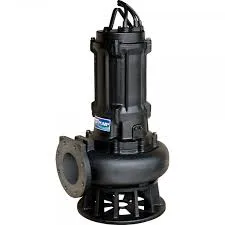Sindhi
- Afrikaans
- Albanian
- Amharic
- Arabic
- Armenian
- Azerbaijani
- Basque
- Belarusian
- Bengali
- Bosnian
- Bulgarian
- Catalan
- Cebuano
- Corsican
- Croatian
- Czech
- Danish
- Dutch
- English
- Esperanto
- Estonian
- Finnish
- French
- Frisian
- Galician
- Georgian
- German
- Greek
- Gujarati
- Haitian Creole
- hausa
- hawaiian
- Hebrew
- Hindi
- Miao
- Hungarian
- Icelandic
- igbo
- Indonesian
- irish
- Italian
- Japanese
- Javanese
- Kannada
- kazakh
- Khmer
- Rwandese
- Korean
- Kurdish
- Kyrgyz
- Lao
- Latin
- Latvian
- Lithuanian
- Luxembourgish
- Macedonian
- Malgashi
- Malay
- Malayalam
- Maltese
- Maori
- Marathi
- Mongolian
- Myanmar
- Nepali
- Norwegian
- Norwegian
- Occitan
- Pashto
- Persian
- Polish
- Portuguese
- Punjabi
- Romanian
- Russian
- Samoan
- Scottish Gaelic
- Serbian
- Sesotho
- Shona
- Sindhi
- Sinhala
- Slovak
- Slovenian
- Somali
- Spanish
- Sundanese
- Swahili
- Swedish
- Tagalog
- Tajik
- Tamil
- Tatar
- Telugu
- Thai
- Turkish
- Turkmen
- Ukrainian
- Urdu
- Uighur
- Uzbek
- Vietnamese
- Welsh
- Bantu
- Yiddish
- Yoruba
- Zulu
Telephone: +86 13120555503
Email: frank@cypump.com
Dec . 05, 2024 14:57 Back to list
Choosing the Right Sump Pump for Effective Sewer Management and Drainage Solutions
Understanding Sump Pumps for Sewage Systems
Sump pumps are essential components in many residential and commercial sewage systems, playing a crucial role in managing excess water and preventing flooding. They are designed to be installed in sump pits, which are typically found in basements or crawl spaces, where they collect water that may accumulate due to heavy rainfall, groundwater seeping through foundation walls, or even plumbing leaks.
How Sump Pumps Work
A sump pump operates quite simply. When water collects in the sump pit, a float switch activates the pump to remove the water. The pump then channels the water away from the house through a discharge pipe, preventing water from backing up and causing water damage or mold growth. Most residential sump pumps are either submersible or pedestal types. Submersible pumps are designed to operate while submerged in water, which helps to reduce noise and provides a more streamlined appearance. Pedestal pumps, on the other hand, have their motor positioned above the sump pit, making them easier to service and maintain.
Importance of Sump Pumps in Sewage Management
While many homeowners associate sump pumps with flood prevention, their role in sewage management can't be overstated. In areas prone to heavy rainfall, the risk of sewage backup increases significantly. A sump pump helps mitigate this risk by ensuring that excess water does not overwhelm the drainage system. Furthermore, some sump pumps are equipped with special features that allow them to handle not just stormwater, but also greywater or wastewater, which can be vital in preventing sewage backups in homes without a proper drainage system.
Choosing the Right Sump Pump
sump pump for sewer

When selecting a sump pump for sewage management, several factors should be carefully considered. Firstly, the capacity of the pump is critical. It is usually measured in gallons per hour (GPH) and refers to the number of gallons the pump can move per hour. Homeowners should assess their specific needs based on the amount of water that accumulates in the sump pit during heavy rains or flooding events.
Additionally, the type of pump is essential. Submersible pumps are often preferred for sewage applications because they can handle larger volumes and solid waste, unlike most pedestal pumps. However, considering the pump's horsepower is also vital, as it determines how effectively the pump can move water.
Maintenance and Care
Regular maintenance is necessary to ensure that sump pumps function effectively throughout their lifespan. Homeowners should check the pump periodically for debris or clogs in the sump pit and the discharge pipe. Testing the pump by pouring water into the sump pit to see if the float switch activates is a good practice. Additionally, maintaining a backup power source, such as a battery backup system, is crucial for those in areas prone to power outages during storms.
Conclusion
In conclusion, sump pumps play a vital role in sewage management, protecting homes from water damage and preventing sewage backups. Understanding how these pumps operate, their importance in sewage systems, how to choose the right one, and the necessary maintenance can empower homeowners to make informed decisions. Whether it's a submersible or pedestal pump, investing in a reliable sump pump is a crucial step in safeguarding your home against the inevitable challenges posed by water accumulation and sewage management.
-
Custom Drilling Mud and Slurry Pump Supplier - High Efficiency, Tailored Solutions
NewsJun.10,2025
-
Supply Vertical Submersible Sewage Pump High-Efficiency WQ/QW Pumps Supplier
NewsJun.10,2025
-
Premium Sewage Ejection System & Pumps Efficient Waste Removal
NewsJun.09,2025
-
Premium Wholesale Slurry Pump Impellers Durable & Efficient Slurry Handling
NewsJun.09,2025
-
Top Sewage Pump Companies Durable Industrial Solutions for Efficiency
NewsJun.09,2025
-
Heavy Duty Slurry Pumps - OEM High Performance & Bulk Wholesale
NewsJun.09,2025










